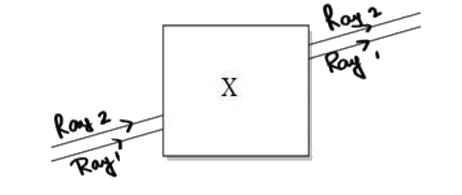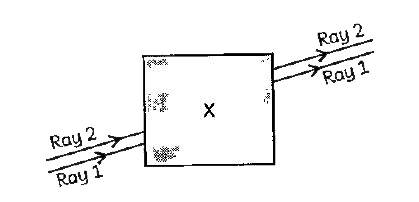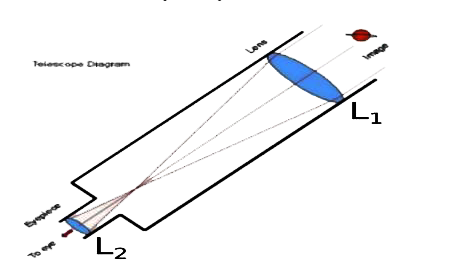Sakshi wanted to test the quality of her dupatta. She pulled a small strand of yarn from the dupatta and burned it. It smelled like a burning paper. She inferred that the dupatta is made of pure
Wool
Cotton
Silk
None of these.
The correct Answer is:B
Cotton is a natural fibre obtained from cotton plant. It easily catches fire and burns with a bright yellow flame. Upon burning it smells like burning paper because cotton is a plant product like paper.
Topper's Solved these Questions
- BOOK - SCIENCE OLYMPIAD FOUNDATION CHAPTER - FIBRE TO FABRIC EXERCISE - ACHIEVERS SECTION (HOTS)5videos
FIBRE TO FABRIC
- BOOK - SCIENCE OLYMPIAD FOUNDATION CHAPTER - CLASS 6 SAMPLE PAPER FINAL 4EXERCISE - Section C - Science4videos
CLASS 6 SAMPLE PAPER FINAL 4
- BOOK - SCIENCE OLYMPIAD FOUNDATION CHAPTER - MOTION AND MEASUREMENT OF DISTANCES EXERCISE - ARCHIEVERS SECTION (HOTS)1videos
MOTION AND MEASUREMENT OF DISTANCES
Similar Questions
Paheli went to the market to buy sarees for her mother. She took out a thread from the edge of the two sarees shown by the shopkeeper and burnt them. One thread burnt with a smell of burning hair and the other burnt with the smell of burning paper. Which thread is from a pure cotton saree and which one from a pure silk saree? Give reason for your answer.
View SolutionTake a small quantity of sulphur in a deflagrating spoon and heat it over the flame of a Bunsen burner. As soon as the sulphur catches fire, lower the spoon into a gas jar and close it with a lid. Wait until the sulphur stops burning.
Once the sulphur stops burning, take the spoon out of the jar. Now, pour a small amount of water into the jar and quickly close the lid again. Shake the jar well so that the gas formed in the jar dissolves in the water.
(a). Test this solution formed in the jar with red and blue litmus papers. What do you observe?
(b). What can you conclude about the reaction of non-metals with oxygen from this experiment?View Solution
Knowledge Check
- Question 1 - Select One
A teacher of class VIII demonstrates the following activity in her class: The teacher takes a small amount of sulphur in a spoon and burns it. She then puts the spoon into a tumbler ' with a lid to erisure that the gas produced does not escape.
After a few minutes, she adds water to the tumbler.
What happens, if blue and red litmus papers are put into the tumbler?ABlue litmus turns redBNo change in bothCBlue litmus remains blueDRed litmus turns blue - Question 2 - Select One
Anita prepared a fresh solution of sodium hydroxide in a test tube. She dropped a small piece of aluminium foil into it and then brought a burning matchstick near the mouth of the test tube. She indicates the presence of:
AWater gasBOxygen gasCHydrogen gasDAluminium gas - Question 3 - Select One
A teacher of Class VIII demonstrates the following activity in her class :
The teacher takes a small amount of sulphur in a spoon and burns it. She then puts the spoon into a fumbler with a lid to ensure that the gas produced does not escape. After a few minutes, she adds water to the tumbler."
What happens if blue and red litmus papers are put into the tumbler?ANo change in both.BBlue litmus turns red.CBlue litmus remains blue.DRed litmus turns blue.
Noor, a young student, was trying to demonstrate some properties of light in her Science project work. She kept ‘X’ inside the box (as shown in the figure) and with the help of a laser pointer made light rays pass through the holes on one side of the box. She had a small butter-paper screen to see the spots of light being cast as they emerged.

What could be the ‘X’ that she placed inside the box to make the rays behave as shown?View SolutionA teacher of class VIII demonstrates the following activity in her class: The teacher takes a small amount of sulphur in a spoon and burns it. She then puts the spoon into a tumbler with a lid to ensure that the gas produced does not escape.
After a few minutes, she adds water to the tumbler.
What happens, if blue and red litmus papers are put into the tumbler?View SolutionCase : Noor, a young student, was trying to demonstrate some properties of light in her Science project work. She kept 'X' inside the box (as shown in the figure) and with the help of a laser pointer made light rays pass through the holes on one side of the box. She had a small butter-paper screen to see the spots of light being cast as they emerged.

What could be the 'X' that she placed inside the box to make the rays behave as shown?View SolutionA teacher of Class VIII demonstrates the following activity in her class :
The teacher takes a small amount of sulphur in a spoon and burns it. She then puts the spoon into a fumbler with a lid to ensure that the gas produced does not escape. After a few minutes, she adds water to the tumbler."
In the above demonstrated activity, which substance is formed when sulphur dioxide is dissolved in water?View SolutionSumati wanted to see the stars of the night sky. She knows that she needs a telescope to see those distant stars. She finds out that the telescopes, which are made of lenses, are called refracting telescopes and the ones which are made of mirrors are called reflecting telescopes.

So she decided to make a refracting telescope. She bought two lenses, L1 and L2. out of which L1 was bigger and L2 was smaller. The larger lens gathers and bends the light, while the smaller lens magnifies the image. Big, thick lenses are more powerful. So to see far away, she needed a big powerful lens. Unfortunately, she realized that a big lens is very heavy. Heavy lenses are hard to make and difficult to hold in the right place. Also since the light is passing through the lens, the surface of the lens has to be extremely smooth. Any flaws in the lens will change the image. It would be like looking through a dirty window.
Sumati did some preliminary experiment with the lenses and found out that the magnification of the eyepiece (L2) is 3. If in her experiment with L2 she found an image at 24 cm from the lens, at what distance did she put the object?View Solution

